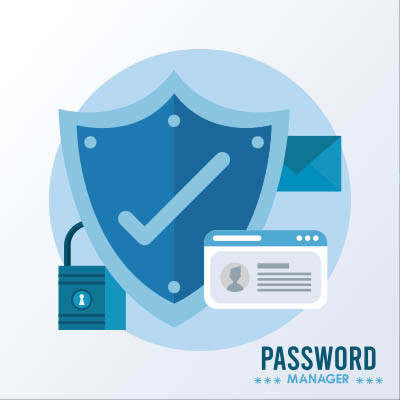NetWorthy Systems Blog
Most of us use our internet browser every single day without thinking twice. Open tab, type something, click stuff, maybe panic a little when 42 tabs are open. Your browser can actually do a lot more for you, including saving you time and keeping you organized. This month, we thought we’d give you three browser tips that can seriously help you.
Your Point of Sale (POS) system does more than ring up sales, it’s the control center that keeps your entire operation running. From processing payments to managing inventory and generating reports, it plays a vital role in your daily business flow. Like any technology, a POS system can get old, glitchy, or just fall behind. If you’ve been questioning whether yours is still doing the job, here are five clear signs that it’s time to move on and upgrade to something better.
Cyberthreats aren’t just occasional inconveniences, especially nowadays. They are constant, evolving, and some are so highly sophisticated that you can hardly blame yourself if you fall victim to them. This is why proactivity is so important. Businesses that take a reactive approach to cybersecurity find themselves in a never-ending cycle of damage control. Without a purposeful cybersecurity strategy, any organization faces recurring breaches, data loss, and ultimately a situation where customer distrust can result in the company's financial ruin. This month, we thought we would take a look at why having a comprehensive cybersecurity strategy that addresses these risks is so critical for the modern business to accomplish.
Businesses run on collaboration, and thanks to technology, working together has never been easier. The right tools can make all the difference, helping teams communicate better, stay organized, and keep projects moving forward. Let’s go into the aspects that make some of the key collaboration tools businesses are using today work.
Imagine owning an elevator that you would only service if it broke down? Sounds ridiculous, right? Well, that’s exactly what businesses do when they rely on a break/fix IT strategy.
Break/fix IT means waiting until something goes wrong before calling in the experts. While this might seem like a cost-saving move, in reality, it’s a fast track to frustration, downtime, and lost revenue. Let’s break down why this approach makes no sense in today’s business world.
Absolutely nobody likes dealing with passwords. They’re annoying, hard to remember, and yet, somehow, hackers seem to have no problem cracking them. That’s where password managers come in. They take the stress out of remembering a hundred different logins while keeping your business secure. If you’re still relying on sticky notes or using the same password for everything so you can remember it, it’s time to make the switch.
Artificial intelligence is taking over enterprise computing. So much so that there is some degree of cynicism among CIOs and other technology leaders about what exactly AI can do for them. The reality is that AI can do some pretty remarkable things and is advancing pretty quickly, but if you are expecting it to transform your business with minimal effort, you might be in for a rude awakening. This month, we want to take a look at how AI is beneficial for businesses and what to expect from the technology in the near future.
Your organization needs its technology to fuel its day-to-day operations. That means they need to be maintained. Organizations that don’t have an IT department will often look to use different strategies to ensure their IT is up and running. Without the proper expertise, however, keeping this technology maintained can be a major problem.
Over a quarter of all data breaches happen to small businesses. The cost of a data breach is really prohibitive to your business’ operational and financial health. To keep your business’ data and infrastructure free of threats and relatively secure, small businesses will need a combination of useful technology tools and well-designed strategies. Let’s take a look at several steps your small business can take to secure itself from digital theft.
The cloud has been a good resource for business for quite a while. Just how good? Currently, nine-out-of-ten businesses operate with some type of cloud-hosted solution. In fact, by the figures, we’re looking at a cloud-hosted future. We thought it would be interesting to take a look at some of the cloud computing stats and trends to paint a picture of just how the cloud has grown up.
If you’re trying to minimize your operating costs to give you more capital to build your business, it is important to keep in mind that sacrifice isn’t your only option. Instead, you also have the option of streamlining and minimizing some of your larger expenses by enlisting a managed services provider (MSP) and the more sustainable business model we adhere to.
Do you have any idea when the last time your copier was serviced? Do you know if the software your business depends on has been updated and patched? If you have no idea about the answers to these questions, you may be staring disaster in the face. This month we thought we’d discuss how you can ensure that your technology is managed and how you can keep your business from being jeopardized by a catastrophic operational problem.
The question this article will present is simple: Does your business have a dedicated data backup and disaster recovery system? A comprehensive backup and disaster recovery platform (BDR) can turn out to be one of the most critical parts of managing a business’ IT infrastructure, and if you don’t have one, you should absolutely get one.
Keeping your network and infrastructure free from threats is always a priority, but with so many people working remotely, businesses have encountered problems doing so. In fact, hackers and scammers have come out of the woodwork to try and gain entry into unauthorized networks or to flat-out steal data. This month, we thought we would take a look at how the COVID-19 pandemic has exacerbated the threats out there.
The way your business uses and accesses data is changing. A short time ago, you couldn’t imagine that you would have a comprehensive strategy to keep data secure when sending and receiving it wirelessly, but today wireless transmission methods have become more secure, reliable, and fast. This month, we’ll take a look at the difference between wired and wireless connections in the modern business.
There aren’t many technological assets as important for the modern business than its communications solutions. The telephone, while being one of the oldest currently utilized communications systems available, is still the most utilized. Today, we will look at business telephone systems and why choosing Voice over Internet Protocol simply makes sense for your business.
Security is a major part of any business, and if there isn’t a diligent approach to the implementation of it, you can be left with huge holes in your network. This month, we thought we would discuss some of the best practices you can take to make sure that your organization’s security is in the best possible position to protect your digital resources.
Business is more mobile now than it has ever been. For the most part, this uptick in mobility has helped sustain some business at a time when many would be expected to fail, but mobility isn’t all good. This month we thought we would take a long look at mobility and how it can be a problem for modern businesses.



















